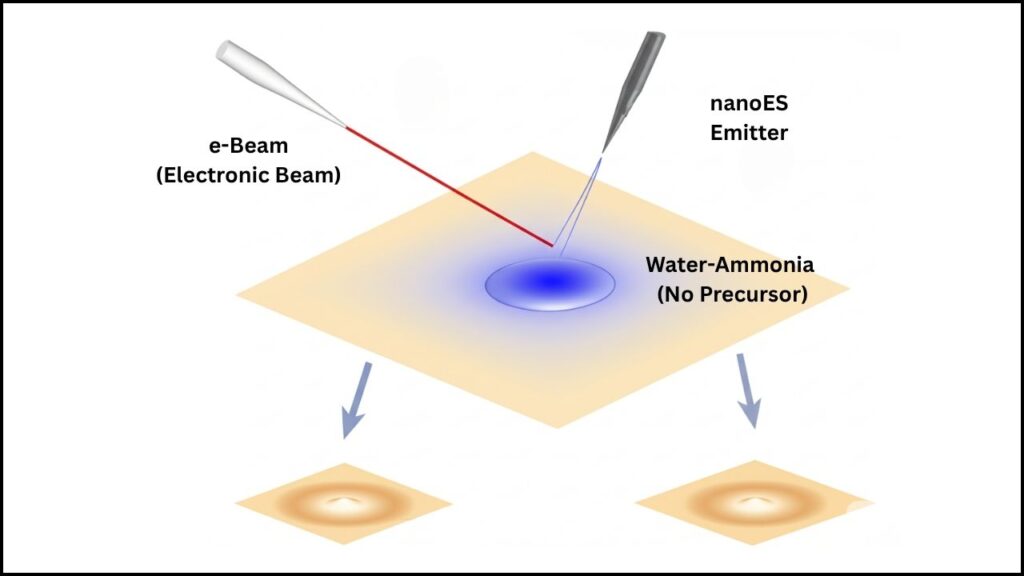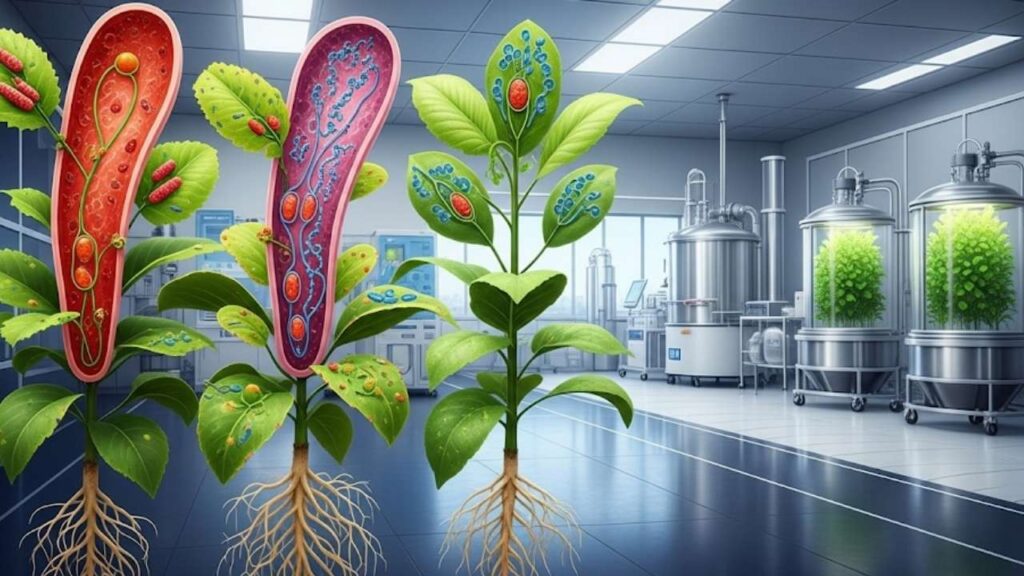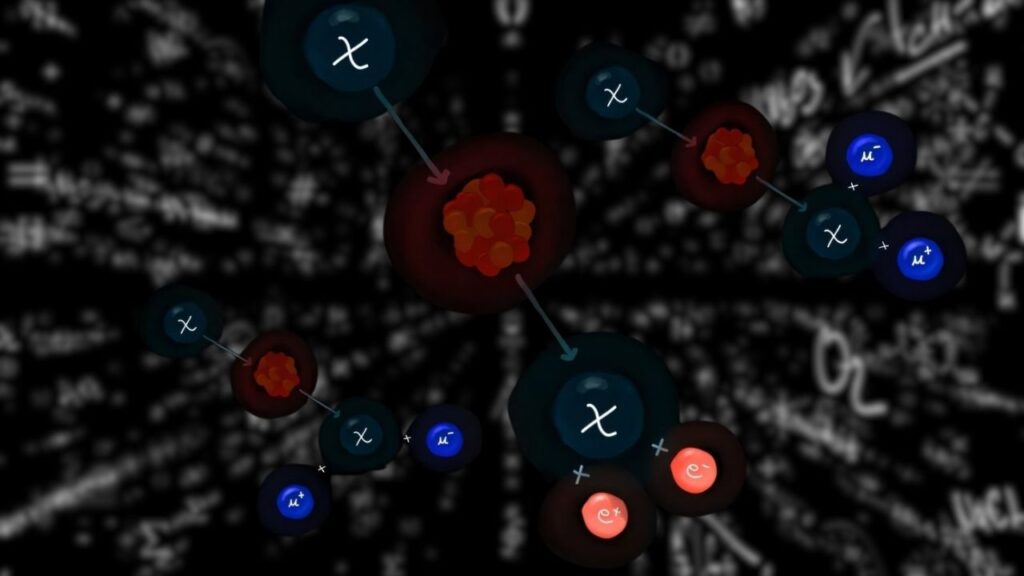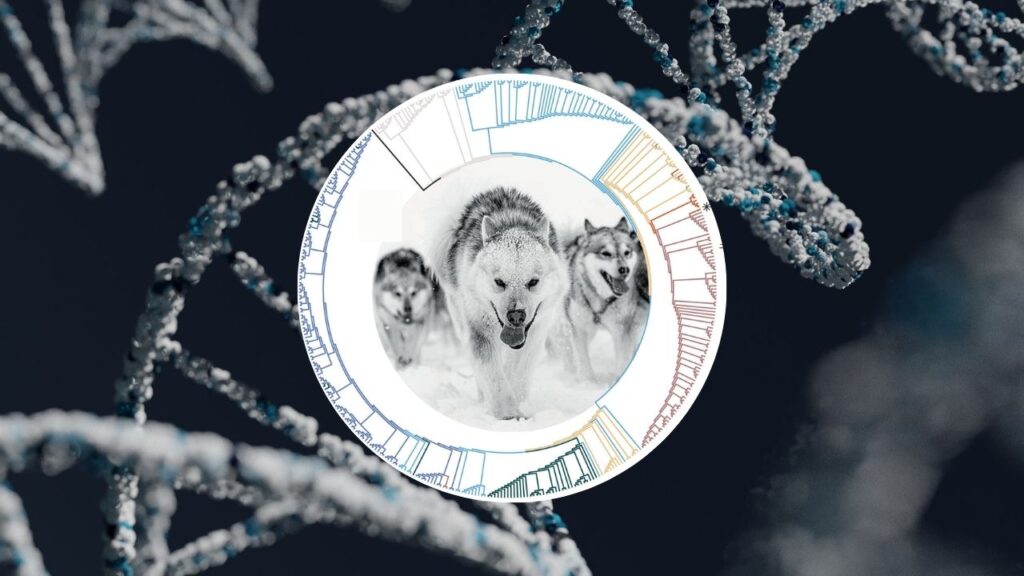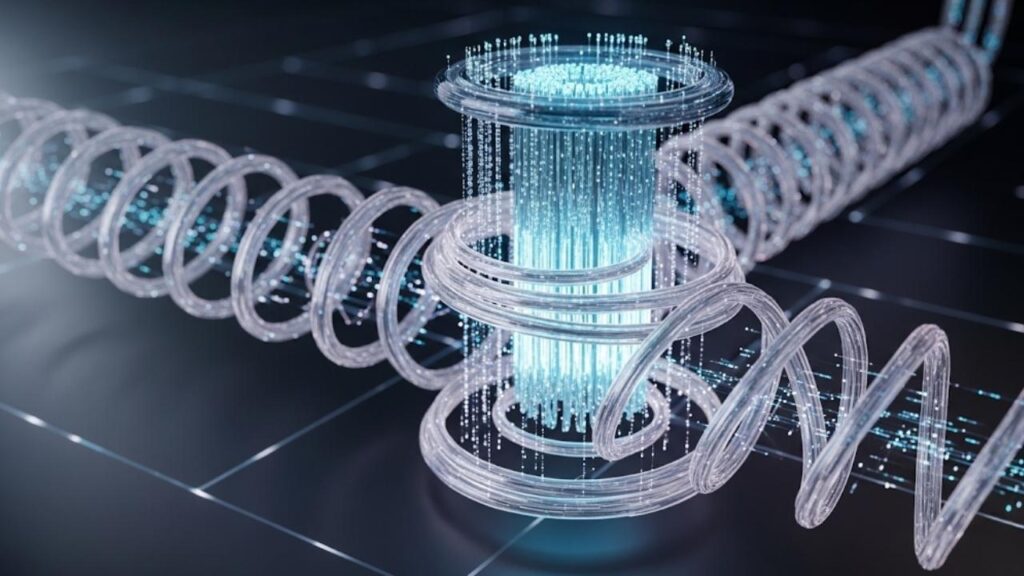For the first time ever, astronomers have watched the very beginning of a new solar system forming—around a baby star named HOPS-315, located about 1,300 light-years from Earth in the Orion Nebula. This is not just another discovery; it’s a direct glimpse at the process that created our own planetary neighborhood, including Earth, over 4.6 billion years ago.
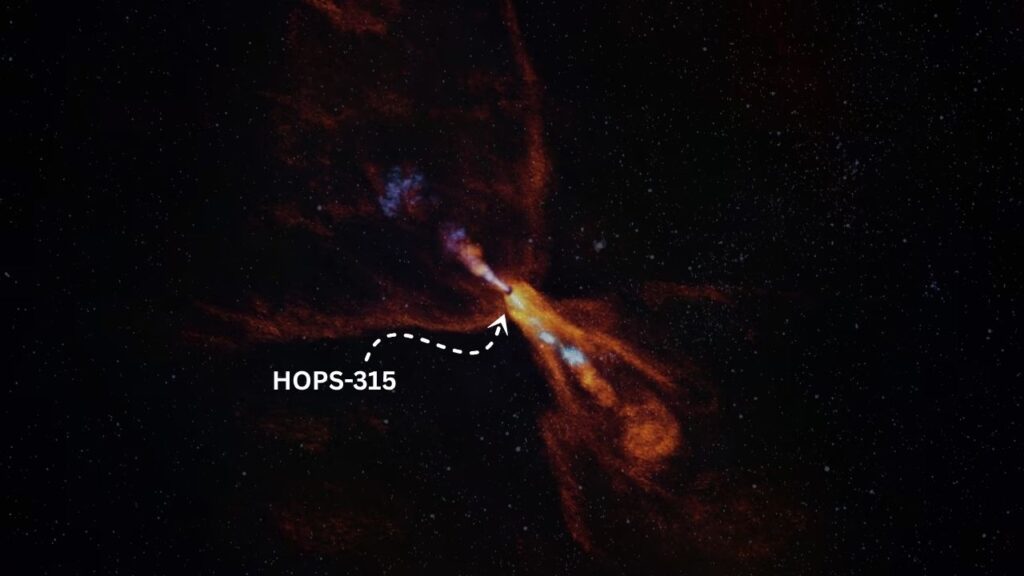
Unlike our mature Sun, HOPS-315 is only about 100,000–200,000 years old—barely a cosmic toddler. Yet, already, its surrounding disk of gas and dust is showing the first clear signs of clumping rocky minerals—the earliest material that can one day form Earth-like planets. This breakthrough was made possible by the combined power of the James Webb Space Telescope (JWST) and the Atacama Large Millimeter/submillimeter Array (ALMA), two of the most advanced observatories ever built.
Table of Contents
Astronomers Witness the Birth of a New Solar System
| Aspect | Details | Relevance/Source |
|---|---|---|
| Star Name | HOPS-315 | Sun-like, baby star in Orion Nebula, 1,300 light-years from Earth |
| Age | 100,000–200,000 years | One of the youngest stars known to begin planet formation |
| Instruments Used | James Webb Space Telescope (JWST), ALMA | JWST detected mineral signatures; ALMA mapped their location |
| Where Minerals Form | Inner disk, near “asteroid belt” region | Rocky minerals condense where Earth-like planets could form |
| Key Materials Observed | Crystalline silicates, silicon monoxide gas | Same as found in ancient meteorites from our Solar System |
| Scientific Impact | First direct evidence of planetesimal formation | Confirms theories, provides real-time model for early Solar System |
| Publication | Nature, July 16, 2025 | High-authority, peer-reviewed science journal |
| Professional Insight | Major career opportunity in planetary formation research | Growing field, new telescopes, interdisciplinary collaboration |
| Official Source | Published in Nature | View official article |
Witnessing the birth of a new solar system is a milestone for science and for humanity. For the first time, we’ve seen the actual process that gave rise to planets unfolding around another star—HOPS-315. This discovery bridges the gap between theory and observation, offering practical insights for professionals and an inspiring story for students and families.
As technology advances, astronomers will uncover more “baby solar systems,” revealing their secrets and helping us understand our place in the universe. Whether you’re a scientist, student, teacher, or simply curious, this is a moment to celebrate—we’re all cosmic explorers, sharing in the thrill of discovery.
What Does “Birth of a Solar System” Really Mean?
A solar system is born when a massive cloud of gas and dust in space—called a molecular cloud—collapses under its own gravity. At the center, a new star is born; around it, leftover material spins into a flat, swirling protoplanetary disk. Inside this disk, dust particles and gas molecules begin to bump together. Sometimes they stick, growing from microscopic grains to pebbles, rocks, and eventually, the building blocks of planets—planetesimals.

This process had only been theorized and indirectly inferred from older systems before. Astronomers had seen fully formed planets, and they had seen disks without planets, but never the actual beginning—the moment when solid materials first start to clump together. That’s exactly what’s happening around HOPS-315 right now.
Why is this such a big deal? Because until now, scientists had to piece together the early history of our own Solar System using ancient meteorites and computer models. With HOPS-315, they’re watching a real-time cosmic laboratory—a living example of how planets may form across the universe.
How Did Astronomers Make This Discovery?
The breakthrough was made possible by two of the world’s most powerful telescopes. JWST, with its unprecedented infrared sensitivity, detected the heat and unique chemical signatures of crystalline silicates and silicon monoxide gas—the same minerals found in Earth’s oldest meteorites—just as they were beginning to solidify in HOPS-315’s hot inner disk. ALMA, with its sharp radio “vision,” mapped where these minerals are forming in the disk, showing a region much like where our own asteroid belt sits today.
Cosmic luck played a role too. The disk around HOPS-315 is perfectly tilted toward Earth, and there’s a gap in the outer disk, giving astronomers a rare, clear view into the “planet factory.” This alignment is unusual but critical, as it allows us to see directly into the inner regions where rocky planets are born—a view that’s usually blocked by thick dust and gas.
By combining these observations, astronomers could confirm that solid material is beginning to clump together—the first step toward the formation of actual planets.
Why Is This Discovery So Important?
For the Scientific Community:
This discovery is a “missing link” in astronomy. For decades, scientists have debated how and where planet-forming materials first begin to clump. Now, they have a real-life example to study—a benchmark for understanding how planets form not just in our Solar System, but around other stars throughout the galaxy.
It also validates long-standing theories about planet formation. Computer models and laboratory experiments have suggested that rocky planets begin as dust grains that stick together, but seeing this process unfold naturally around another star is the strongest evidence yet.
For Students and the Public:
This is a teachable moment for everyone interested in space. It’s a real-world demonstration of how science works—how predictions are tested, how new tools allow us to see things never seen before, and how each discovery builds on what came before. For children, it’s a chance to see themselves as future discoverers. For adults, it’s a reminder that the universe is still full of mysteries waiting to be solved.
A Step-by-Step Guide: How Does a Star Form Planets?
Here’s a simple, accurate breakdown of how planets are born, using HOPS-315 as a real-life example:
1. A Star Is Born
A dense region of gas and dust—perhaps triggered by a nearby supernova or a passing molecular cloud—starts to collapse under its own gravity. Most of the material falls to the center, forming a protostar—a baby star like HOPS-315.
What’s left after the star forms? Not nothing—there’s still a lot of gas and dust, spinning in a flattened disk around the new star. This disk is called a protoplanetary disk.
2. The Protoplanetary Disk Forms
As the disk spins, it cools slightly, and tiny dust grains begin to stick together. At first, it’s just random collisions—tiny specks bumping and combining. But over time, these tiny grains grow into larger particles, then pebbles, then rocks.
3. Hot Minerals Begin to Condense
Closer to the star, things get interesting. The inner disk is very hot—far hotter than the outer disk. Here, gases like silicon monoxide begin to cool and turn into solid crystals. These are the first building blocks of rocky planets—the same materials that eventually formed Earth, Venus, Mars, and Mercury.
Why rocky planets first? The inner disk is too hot for most gases (like water and methane) to condense, but not too hot for minerals like silicates and oxides—just like the minerals we find in meteorites from our own early Solar System.
4. Dust Grains Stick Together
As these first crystals form, they collide with dust and gas, growing into larger and larger clumps. Some clumps break apart, while others continue to grow, forming dusty pebbles and then larger rocky bodies.
5. Planetesimals Emerge
Eventually, some of these rocky clumps grow to a kilometer or more in size—planetesimals. These are the building blocks of future planets. They keep colliding and merging, sometimes breaking apart, sometimes sticking together.
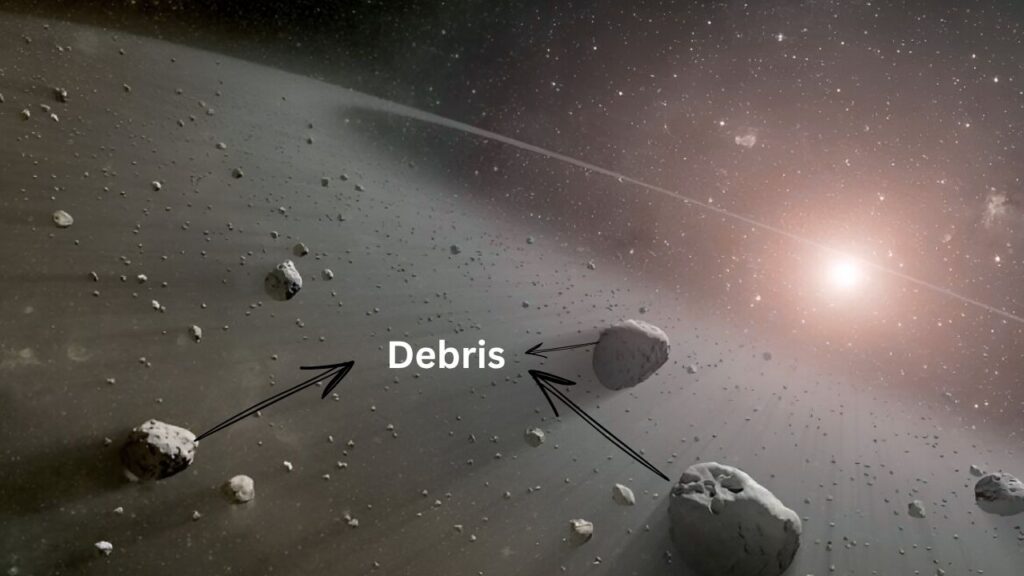
This is the stage astronomers have just seen for the first time around HOPS-315—the very first steps toward planet formation.
6. Planets Take Shape
Over millions of years, these planetesimals collide and merge, sometimes violently, sometimes gently, forming larger and larger bodies. Some bodies grow enough to clear their orbits, becoming protoplanets. Eventually, a few of these protoplanets could become full-fledged planets—some rocky, like Earth; others much larger, like Jupiter.
It’s important to remember: this process takes a very long time. The material around HOPS-315 is only just beginning to clump—it will be millions of years before actual planets form (if they do). But the first steps are now being watched in real time.
What Does This Mean for the Future?
For Research:
Scientists are eager to use JWST, ALMA, and future telescopes to study more young stars like HOPS-315. By comparing these systems, they can look for patterns—do all stars form planets the same way? Are there differences based on the star’s size, temperature, or environment? This will help astronomers refine their theories of planet formation and better understand how common—or rare—Earth-like planets might be.
For Technology:
The success of JWST and ALMA shows the power of collaboration between space- and ground-based telescopes. JWST sees heat and chemical signatures, while ALMA maps the location of those materials. Used together, they form a complete picture of the planet-forming process.
For Careers and Education:
This is a golden age for budding astronomers, engineers, chemists, and data scientists. Studying planet formation requires skills in data analysis, telescope technology, astrochemistry, and computer modeling. Young people interested in these fields have more opportunities than ever to contribute to discoveries like this one.
For Everyone Else:
This discovery makes astronomy more accessible and exciting. Parents and teachers can use real examples like HOPS-315 in science lessons, clubs, and projects. It’s a reminder that the universe is still full of wonders to uncover—and that anyone, at any age, can learn about them.
China’s Space Program Heats Up With 16 Launches and Mars Sample Return Plans
Time Is the Real Fabric of the Universe, Not Space, Says Groundbreaking Study
Photonics in Space: How NASA Is Using Laser Communication to Boost Deep-Space Data Transfer
FAQs About Astronomers Witness the Birth of a New Solar System
Q: How far away is HOPS-315?
A: HOPS-315 is about 1,300 light-years from Earth, in the direction of the Orion Nebula.
Q: How old is HOPS-315?
A: It’s estimated to be 100,000–200,000 years old—much younger than our Sun, which is over 4.6 billion years old.
Q: What instruments were used to make this discovery?
A: The James Webb Space Telescope (JWST) and the Atacama Large Millimeter/submillimeter Array (ALMA). Together, they provided both the chemical and spatial details needed to confirm the first steps of planet formation.
Q: Why is this discovery important?
A: It’s the first direct observation of the earliest stage of planet formation around another star, providing a real-life benchmark for how our Solar System—and potentially others—formed.
Q: Could planets around HOPS-315 be like Earth?
A: It’s theoretically possible, since the rocky minerals seen forming are the same ones that built Earth. However, it will take millions of years for actual planets to form, and many factors (like collisions, migration, and composition) will determine what kind of planets, if any, emerge.
Q: Will we ever see planets forming here directly?
A: Not in our lifetime—it takes millions of years for planets to form. But telescopes like JWST and ALMA will allow us to watch the building blocks of planets as they grow, giving us clues about the process.

